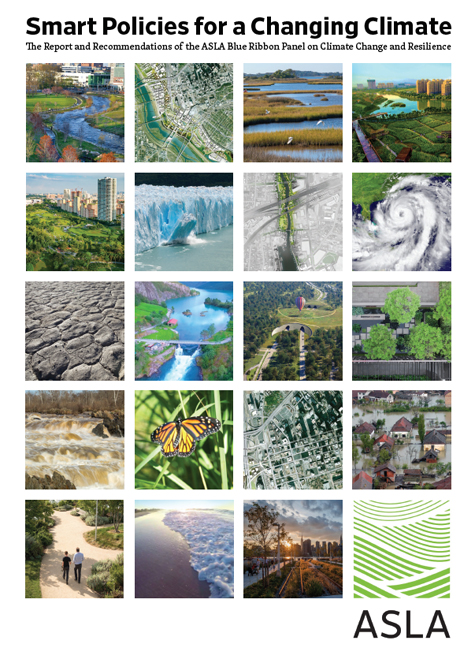Professional Practice
Sustainable Residential Design: Improving Water Management
 This project implements the first graywater reuse system for residential application in the region. It is intended to reduce water consumption by approximately 40 percent. ASLA 2010 Professional Residential Design Honor Award. Catalina Foothills, Tucson, Arizona / D. A. Horchner / Design Workshop, Inc.
This project implements the first graywater reuse system for residential application in the region. It is intended to reduce water consumption by approximately 40 percent. ASLA 2010 Professional Residential Design Honor Award. Catalina Foothills, Tucson, Arizona / D. A. Horchner / Design Workshop, Inc. Any residential landscape can be designed to both reduce flooding during storms and conserve water in times of water scarcity. Homeowners can use green infrastructure approaches, like bioswales and bioretention ponds; rain gardens; rain water harvesting; water recycling; and drip irrigation to more sustainably manage water.
The Federal Emergency Management Agency (FEMA) estimates flooding has caused some $260 billion in damages from 1980 to 2013. And in the past decade, flood insurance claims now total $1.6 billion annually, putting further pressure on the already deeply-indebted flood insurance system. Sustainable landscape architecture practices -- including green infrastructure -- can significantly reduce the impacts of flooding on residences.
Homeowners waste water by irrigating their lawns with water that should be reserved for human consumption. According to the Environmental Protection Agency (EPA), nearly 9 billion gallons of water is used for residential outdoor water use, mainly for landscape irrigation, some 30 percent of total residential water use.
Sustainable residential landscape architecture—if part of an integrated site design, a comprehensive approach to sustainable building and site design—can dramatically reduce water usage while creating a healthy residential environment.
Homeowners can promote the infiltration, storing, and recycling of water, and limit the use of valuable potable water for landscapes. Bioswales / bioretention ponds, rainwater gardens, and local sustainable water recycling and drip irrigation systems can all be used to efficiently manage water. Homeowners can recycle and reuse greywater (and even blackwater) for landscape maintenance, car washing, and toilet flushing.
It's important to note that degraded and compacted soil will reduce water and air infiltration into the ground. Homeowners can maximize the benefits of natural stormwater systems by improving the quality of soil on their property though remediation techniques.
Homes that include natural green infrastructure not only better manage stormwater runoff, but also reduce the massive energy costs associated with running complex water management systems. Water and waste utilities are heavy users of energy and major producers of greenhouse gas emissions.
Local governments are also partnering with non-profit organizations to increase public awareness about using sustainable residential design practices for improving water efficiency.
Source: Irrigation Controllers, Environmental Protection Agency
Bioswales and Bioretention Ponds
Rain Gardens
Rain Water Harvesting
Water Recycling
Drip Irrigation
This guide was written by Dana Davidsen and Jared Green.
Climate Change Resources:
Download Report:
Sustainable Planning and Design Guides:
Sustainable Residential Design Resource Guides:
Health and Well-Being:
Organizations
American Water Works Association
Clean Water Network
Renewable Natural Resources Foundation
The Sustainable SITES Initiative™ (SITES®)
UN-Water
Water Resources, Natural Resources Defense Council
Aqueduct, World Resources Institute
Columbia Water Center, Earth Institute, Columbia University
Ground Water Foundation
The Ground Water Association
Water Sense, Environmental Protection Agency
California Stormwater Quality Association
Center for Watershed Protection
American Society of Civil Engineers
Research
“The Water-Wise Home: How to Conserve, Capture, and Reuse Water in Your Home and Landscape,” Laura Allen, Storey Publishing, 2015
“Water-Smart Landscapes: Start with WaterSense,” Environmental Protection Agency
“Case Studies in Water Conservation,” Environmental Protection Agency
Resources
How to Save Water, the California Way, The Dirt, American Society of Landscape Architects
How to Save Water, the California Way (Part 2), The Dirt, American Society of Landscape Architects
Government Resources
Cases in Water Conservation, U.S. Environmental Protection Agency
Sustainable Infrastructure for Water & Wastewater, U.S. Environmental Protection Agency
Best Management Practice #4: Water-Efficiency Landscaping, U.S. Department of Energy
WaterSense, U.S. Environmental Protection Agency
Water Conservation, City of Vancouver
Water Resources Plan, City of Phoenix, Arizona
Water Use It Wisely, City of Phoenix, Arizona
Ways to Save Water, New York Department of Environmental Protection
Water Management Case Studies, Water Environment Research Foundation
Protecting Water Quality from Urban Runoff, Environmental Protection Agency
Portland Watershed Management Plan, City of Portland, Oregon
Green Stormwater Infrastructure Mini Grants, City of Seattle & King County, Washington
Stormwater Management, SNY College of Environmental Science and Forestry (ESF)
Green Stormwater Infrastructure, City of Seattle
Flood Loss Avoidance Benefits of Green Infrastructure for Stormwater Management, Environmental Protection Agency
Projects
DBX Ranch, Pitkins County, CO
Design Workshop, Inc.
Victoria Garden Mews
Santa Barbara, CA
Woody Creek Garden, Pitkin County, Colorado
Design Workshop, Inc., Aspen, Colorado
Vineyard Retreat, Napa Valley, California
Scott Lewis Landscape Architecture
Design Workshop, Inc.
If you know of useful resources we've missed, please send your recommendations to: info@asla.org